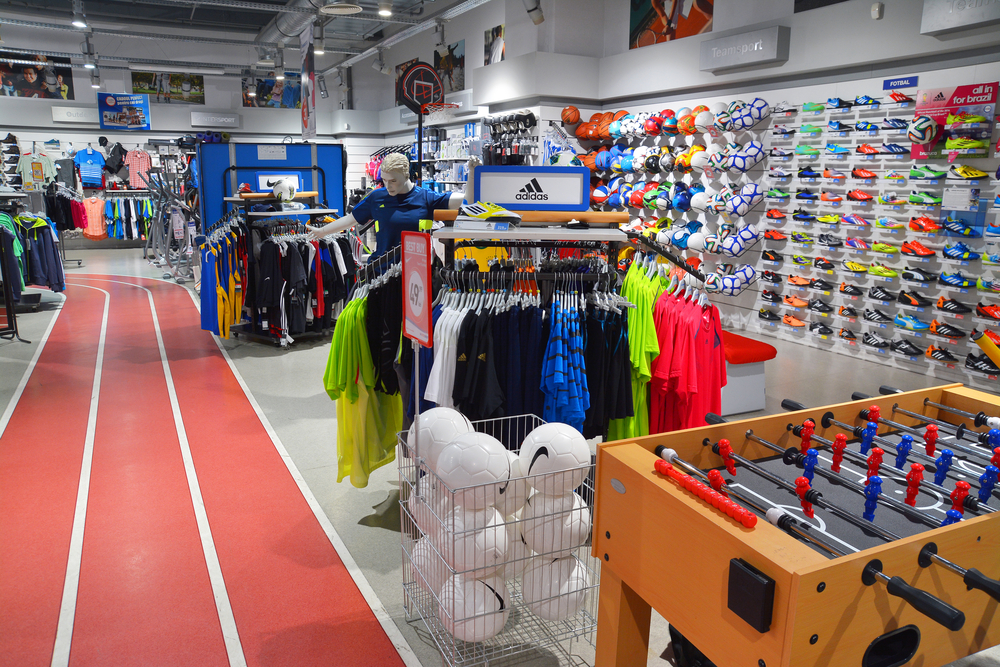Introduction
In the fast-paced world of sports, an athlete’s equipment can make all the difference. Over the decades, sports equipment manufacturing has evolved tremendously, incorporating cutting-edge technology to meet rising performance, safety, and durability demands. From high-tech fabrics used in apparel to advanced materials in protective gear, sports equipment manufacturing is shaping the future of athleticism. Football equipment is a prime example of this evolution, where precision, comfort, and safety are essential. With the growing number of football shops worldwide, finding quality gear to improve your game is easier than ever.
The Evolution of Sports Equipment Manufacturing
The journey of sports equipment manufacturing has been long and dynamic. Initially, sports gear was simplistic and rudimentary, made from natural materials such as Leather and wood. However, with the advancement of technology, the industry began to see a significant shift. Materials like synthetic polymers, carbon fibre, and advanced metals started to dominate the market, resulting in lighter, stronger, and more durable sports equipment.
The development of materials is just one aspect; manufacturing processes have also undergone a revolution. Automation, precision engineering, and 3D printing are now commonly used to create specialized sports equipment. For example, football equipment manufacturers utilize cutting-edge techniques to design products that enhance player performance, reduce injuries, and offer superior comfort.
Football Equipment: Precision, Safety, and Innovation
As one of the most popular sports globally, football requires specialized equipment to enhance gameplay and ensure player safety. Manufacturing football equipment involves rigorous testing, innovation, and the latest materials. Quality and functionality are paramount, whether it’s the football itself, boots, or protective gear.
- Modern Football: Today’s footballs are engineered with multi-layered designs that offer better aerodynamics and control. The stitching is done precisely, and high-quality synthetic materials ensure durability and water resistance. These changes make the ball perform consistently in various weather conditions, providing a fair and competitive game.
- Protective Gear: Items such as shin guards and helmets have advanced significantly due to the integration of shock-absorbent materials like EVA foam and impact-resistant plastics. This development has dramatically reduced the number of sports injuries while allowing maximum mobility and comfort.
- Football Boots: The evolution of football boots is another example of innovation in football equipment. Lightweight materials such as microfibers and knitted uppers have replaced traditional Leather, offering greater agility and comfort. The design of studs and cleats is now more focused on providing superior grip on varying surfaces, making boots an integral part of a player’s performance.
Sustainability in Sports Equipment Manufacturing
As environmental awareness grows, sustainability has become essential in sports equipment manufacturing. Companies are shifting towards eco-friendly materials and processes to minimize their carbon footprint. From using recycled plastics to produce footballs to energy-efficient manufacturing facilities, the industry is making strides in reducing its environmental impact.
Many manufacturers have adopted sustainable materials for sportswear, such as biodegradable plastics and organic cotton. Also, brands encourage consumers to recycle old sports gear, including items bought from their football shop. Some forward-thinking companies even provide discounts for customers who trade in old equipment, creating a closed-loop system that reduces waste.
The Importance of Quality Control in Football Equipment
The safety and performance of football equipment depend heavily on stringent quality control measures. Manufacturers need to ensure that all products meet the required standards set by international sports organizations. Whether it’s testing the resilience of a football to weather conditions or the ability of a helmet to withstand impact, every product goes through multiple rounds of testing.
Moreover, certifications are often needed for football equipment to be approved for official matches. This ensures that players, whether professional or amateur, are using gear that meets the highest safety and performance standards.
Top Football Shops: Where to Find Quality Football Equipment
For those looking to purchase the best football equipment, visiting reputable football shops is essential. A well-stocked football shop offers everything from balls, boots, and jerseys to high-end protective gear. These shops typically carry products from the most trusted brands in the industry, ensuring you get equipment that meets the highest standards of quality.
When selecting a football shop, customers should look for the following:
- Variety of Products: A top-tier shop will offer a wide range of football gear, including equipment for beginners and professionals. This diversity allows customers to find products that fit their budget and performance needs.
- Expert Advice: Many football shops employ staff knowledgeable about the latest gear and trends in football equipment. This expertise can help customers make informed decisions on which products are best suited for their playing style.
- Customization Options: Some football shops also offer customization, allowing players to personalize their boots, jerseys, or other equipment. This added service is top-rated among teams and professionals.
Football Equipment for Every Skill Level
Whether you’re just starting or a seasoned professional, having the right football equipment can significantly impact your game. Beginner players need essential gear, such as entry-level footballs and cleats, while more advanced players often look for specialized products designed to enhance their skills.
A visit to a quality football shop can help players of all skill levels find the right equipment. For beginners, the focus might be on comfort and ease of use, whereas professional athletes prioritize innovation and performance-enhancing features in their gear.
Technological Advancements in Sports Equipment Manufacturing
Technology continues to transform the landscape of sports equipment manufacturing. Innovations such as wearable tech, innovative fabrics, and data analytics are increasingly being incorporated into the design and production of sports gear. These advancements are particularly relevant in football, where real-time data from equipment can enhance player performance.
Smart footballs with embedded sensors can track metrics like speed, spin, and trajectory, providing valuable feedback for players and coaches. This type of technology allows for precise performance analysis, making it easier to identify areas for improvement and fine-tune skills.
Wearable tech, such as GPS trackers and heart rate monitors, is also gaining popularity in football. These devices help monitor player fitness and endurance, reducing the risk of injuries and optimizing training regimes.
Conclusion
- In conclusion, sports equipment manufacturing plays a crucial role in shaping the future of sports, with football equipment being a key example of how innovation drives performance. From the latest materials to cutting-edge technology, manufacturers continue to push the boundaries of what’s possible. Whether you’re a professional athlete or just starting your journey in football, having access to high-quality gear from a reliable football shop is essential. By staying informed about the latest trends and advancements, players can ensure they are always at the top of their game.














